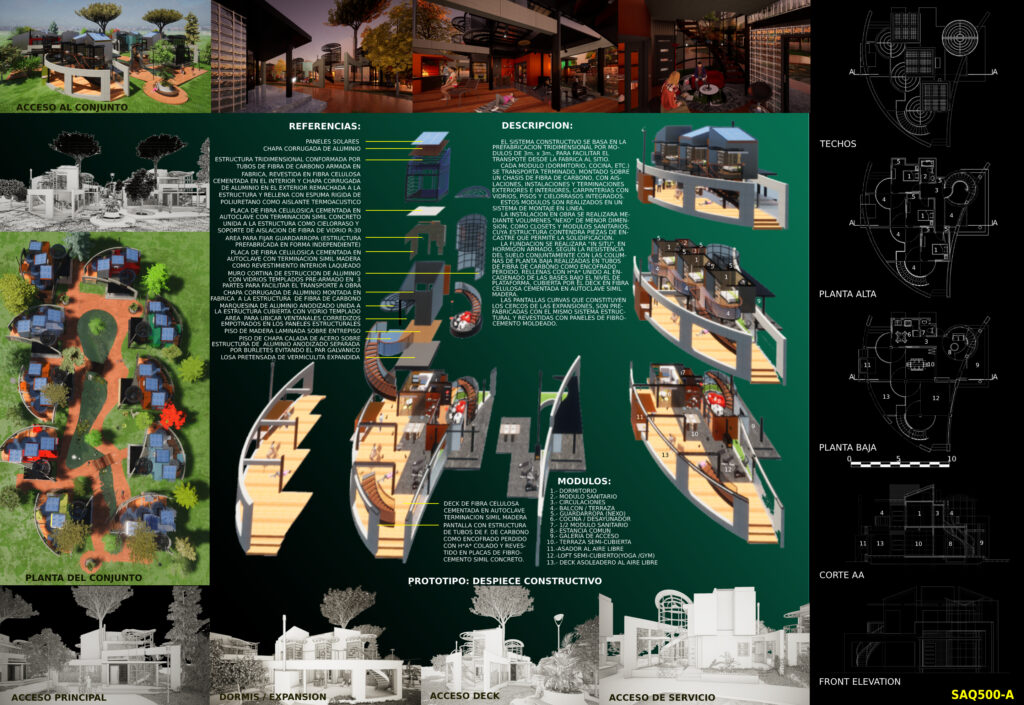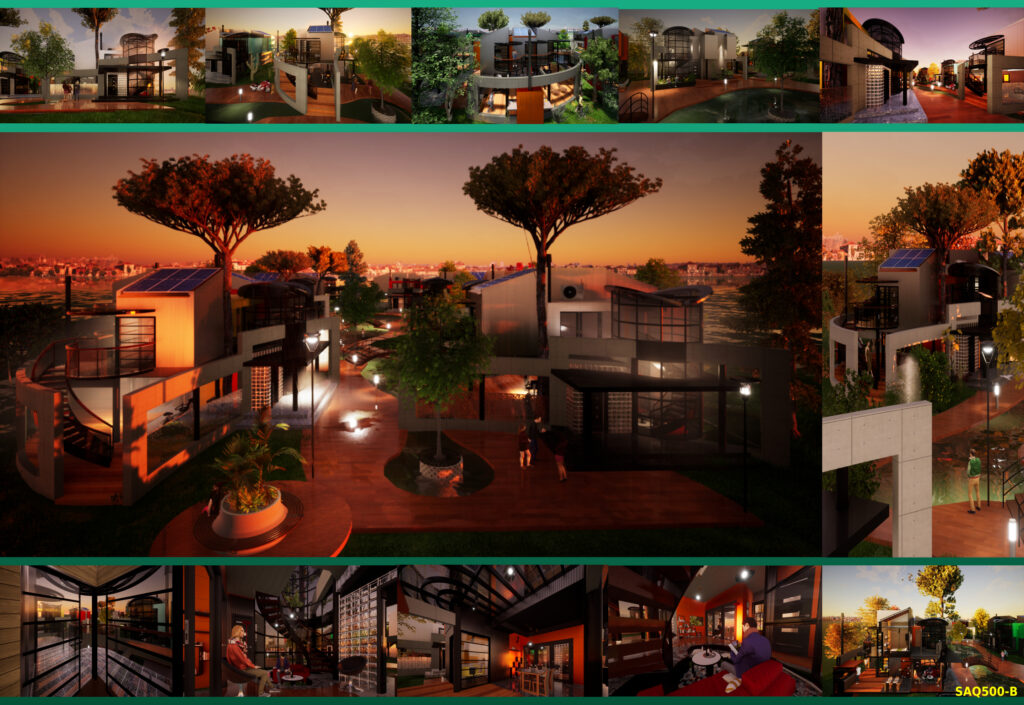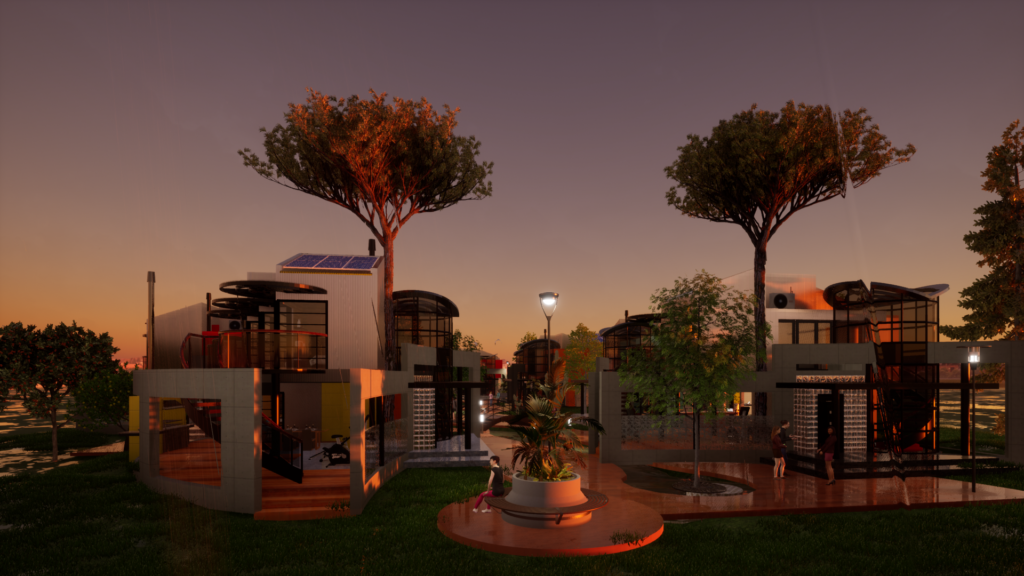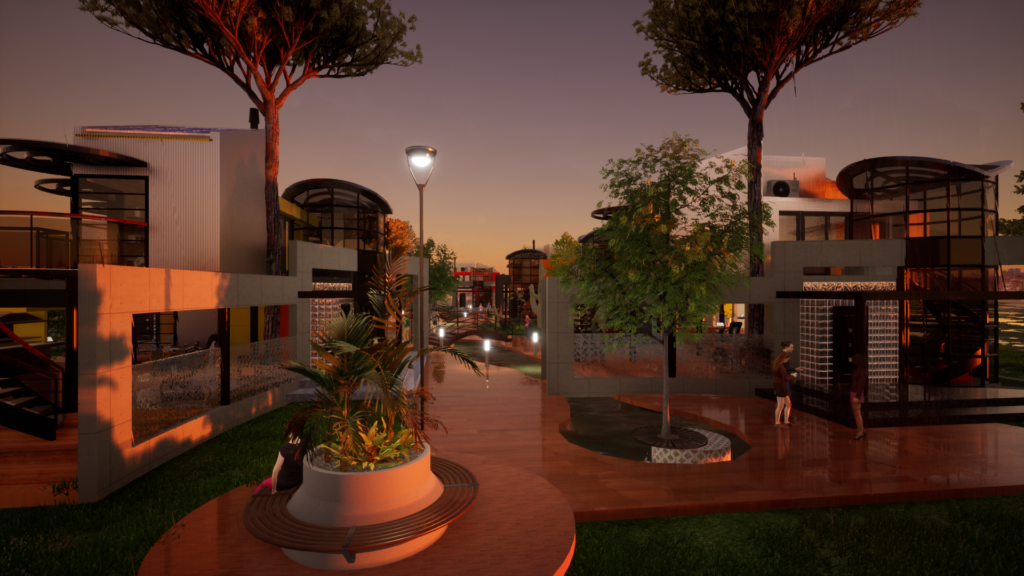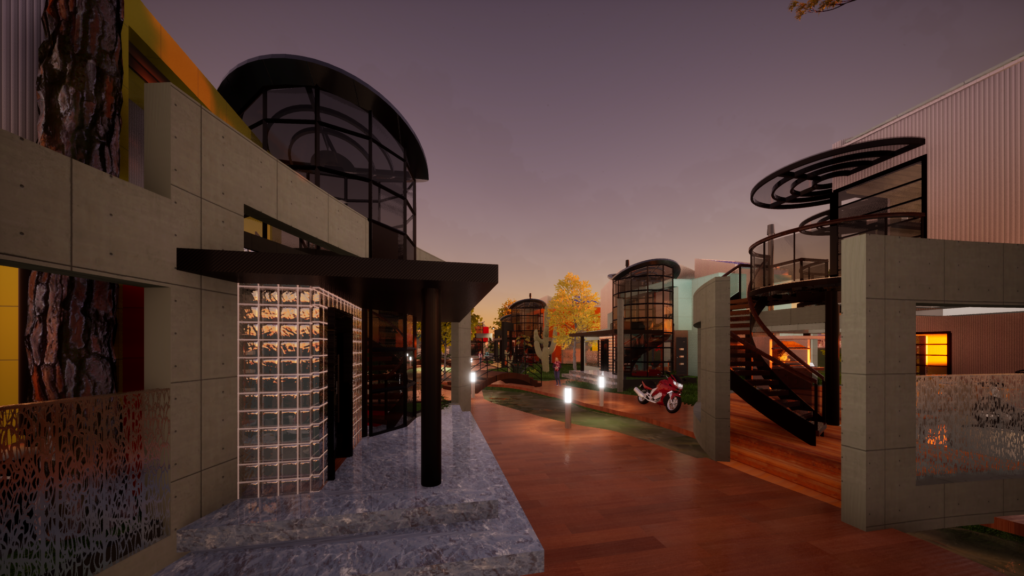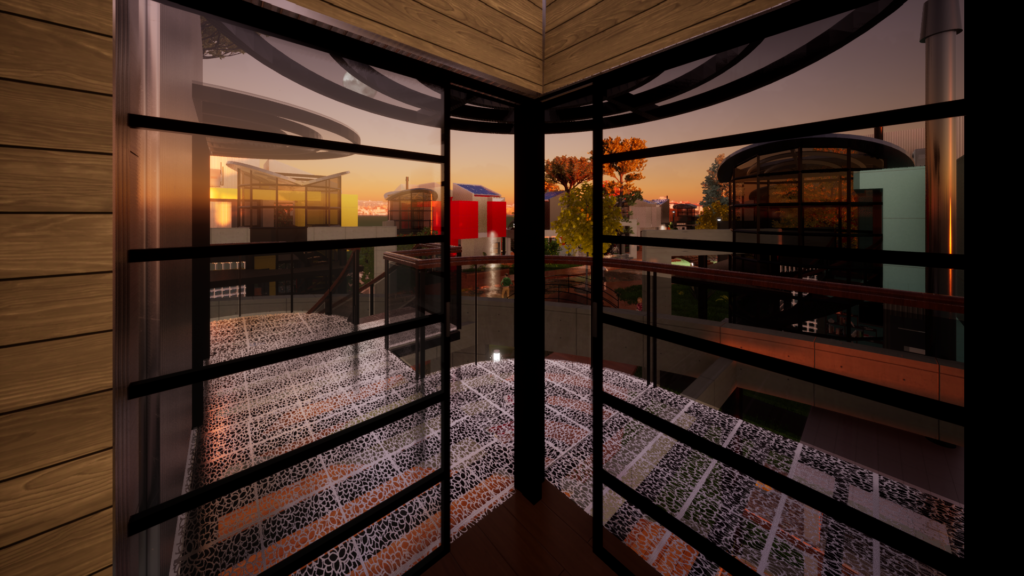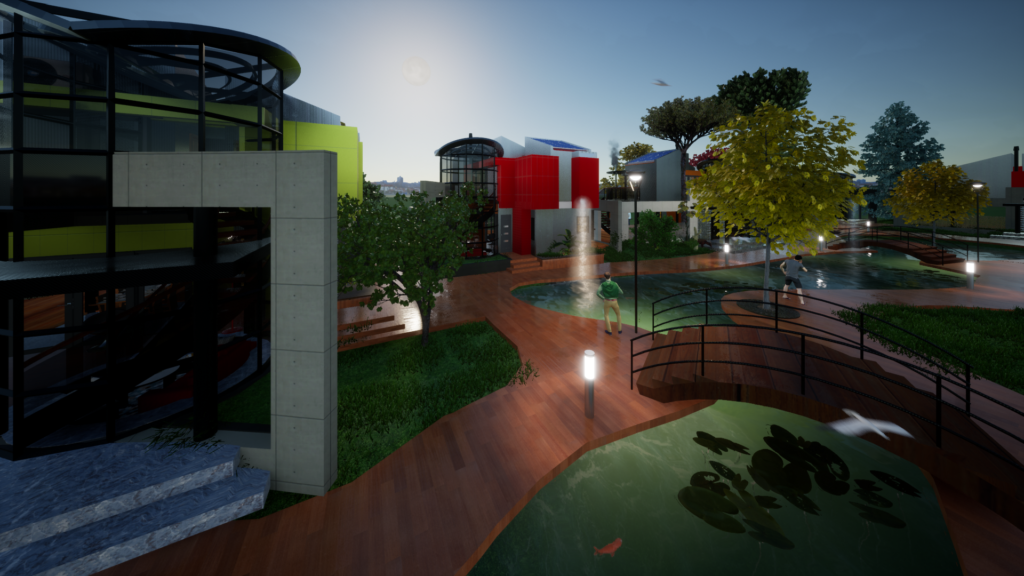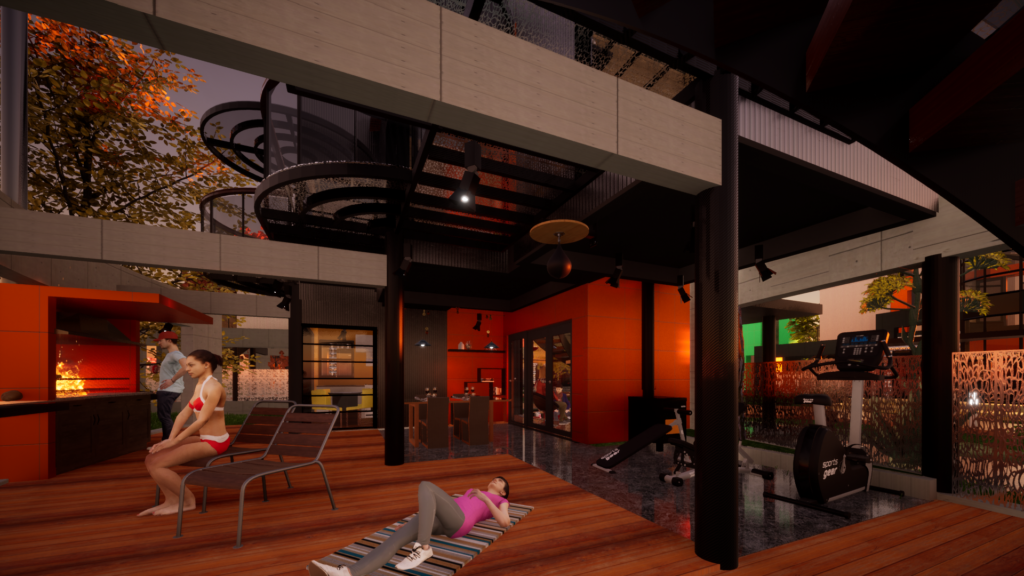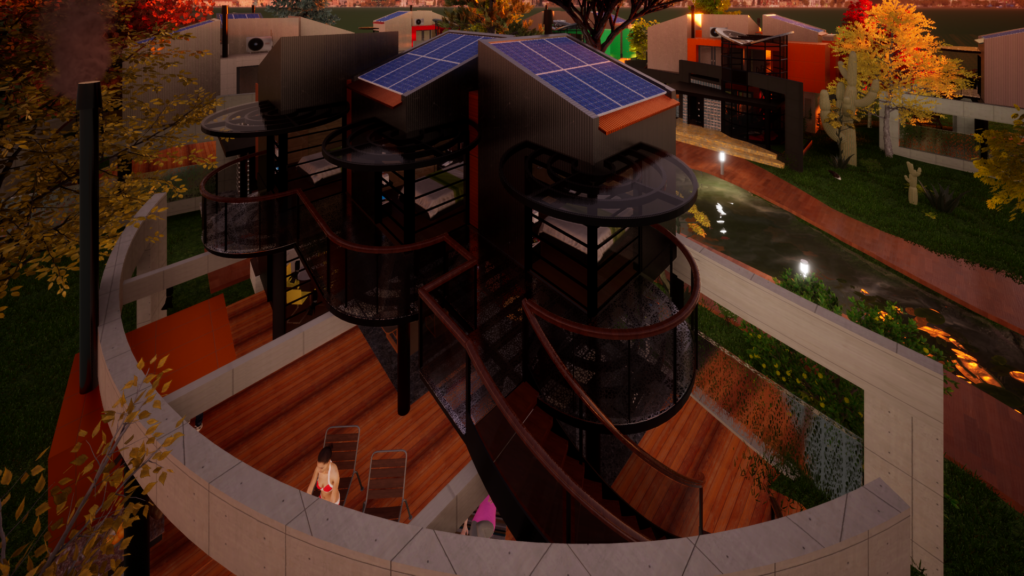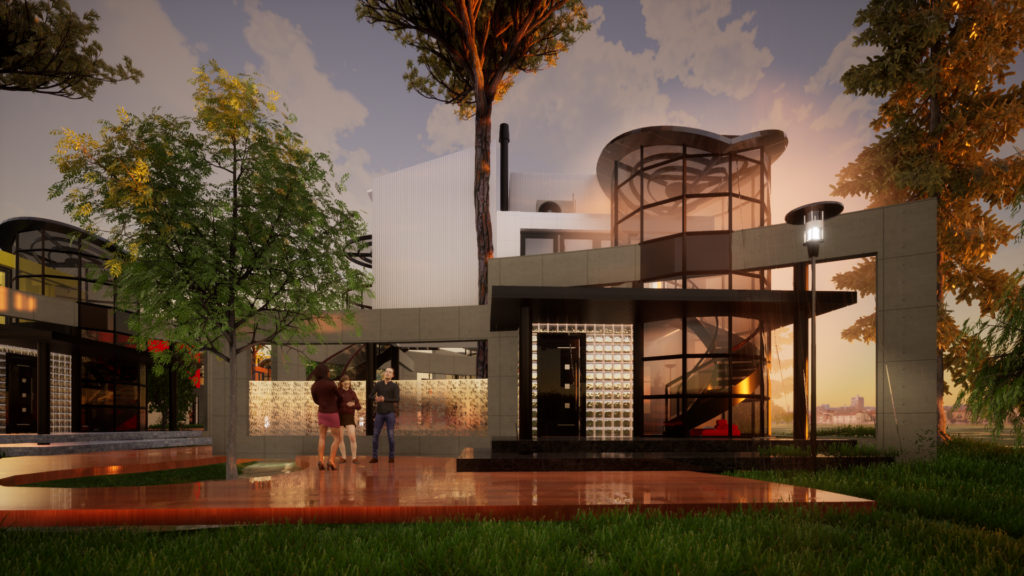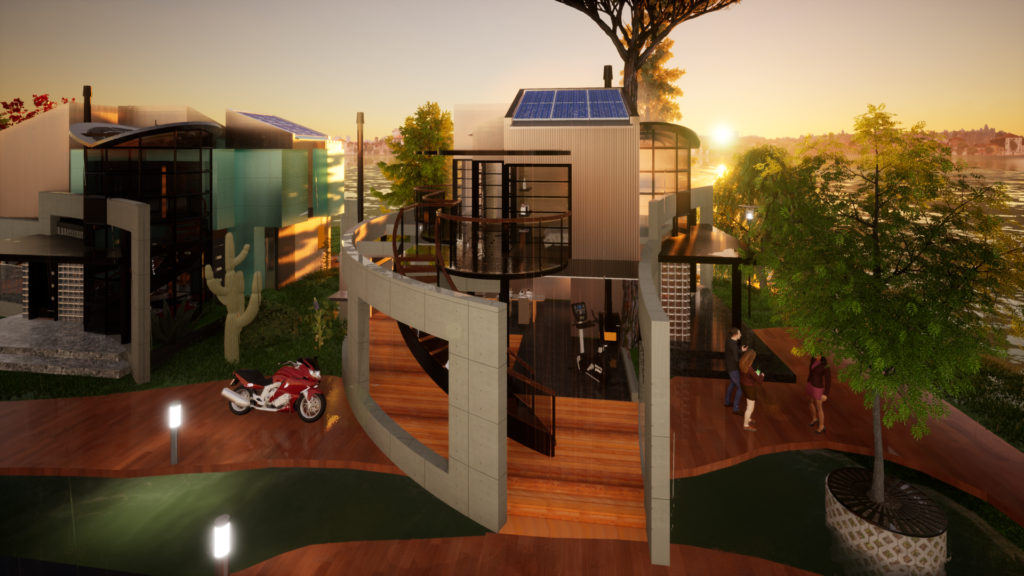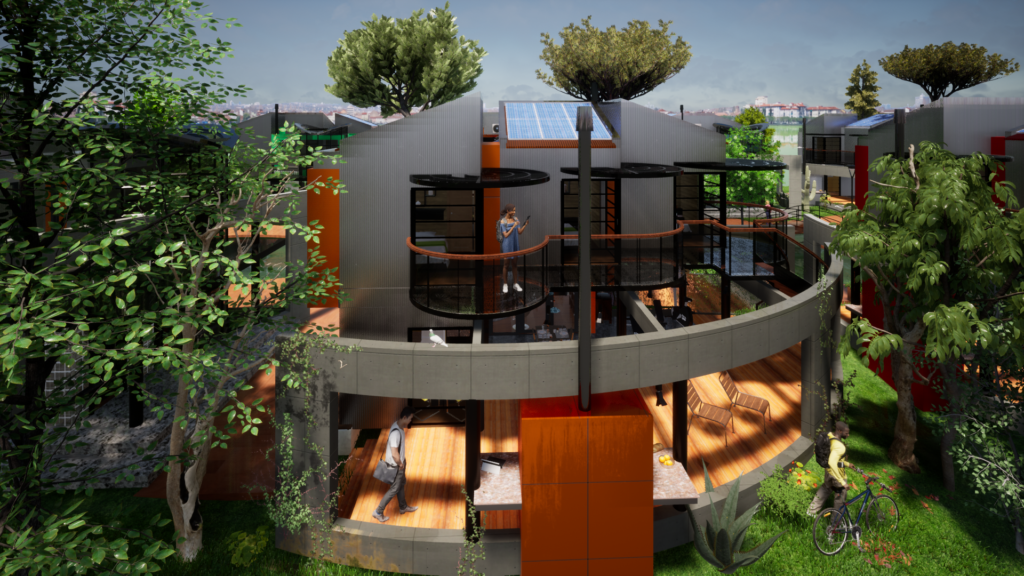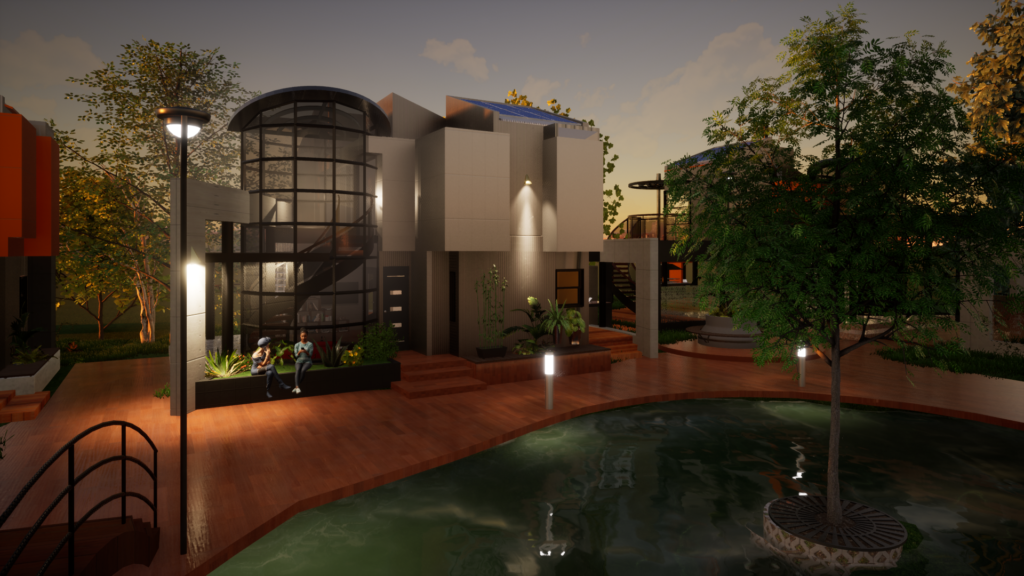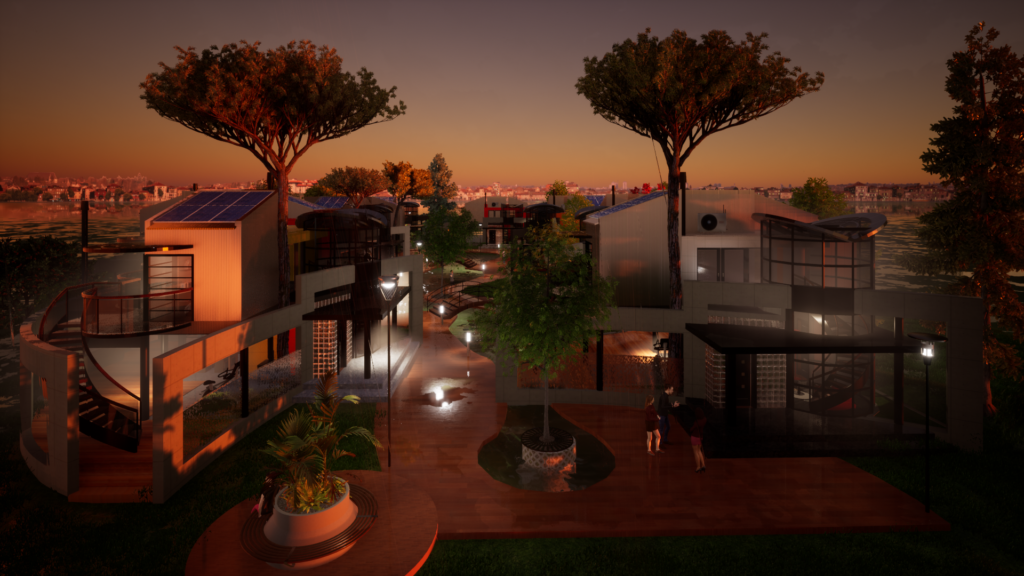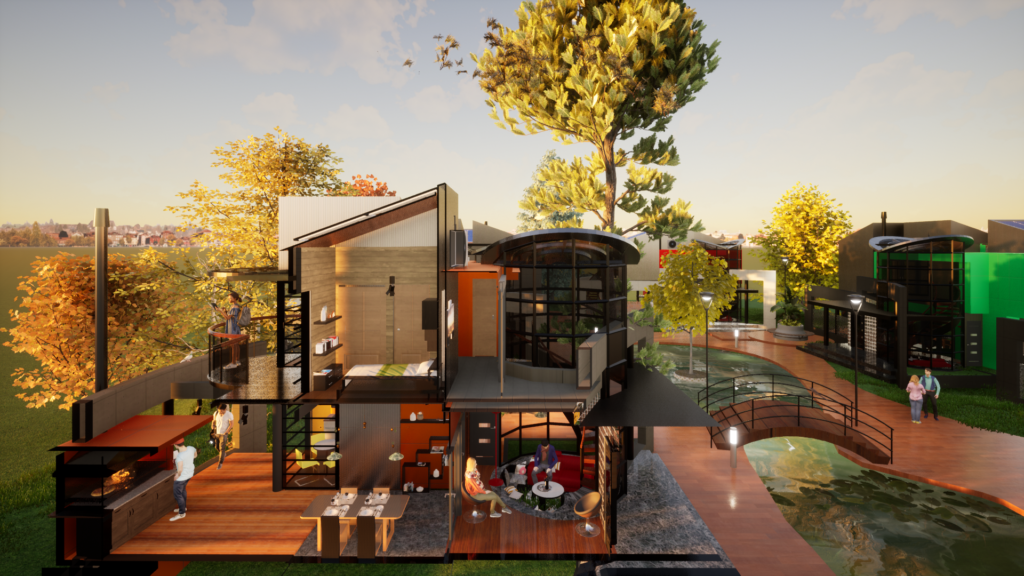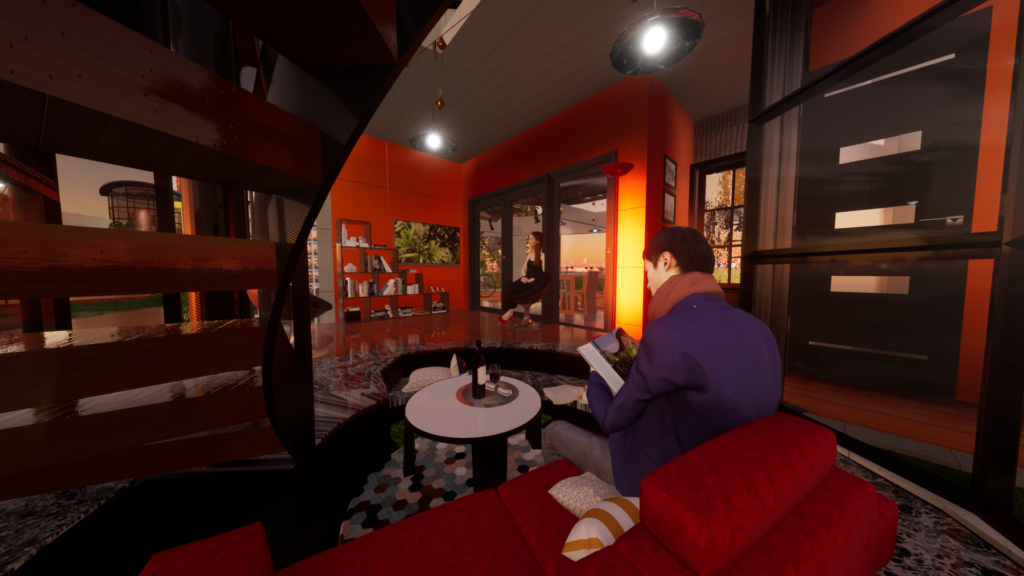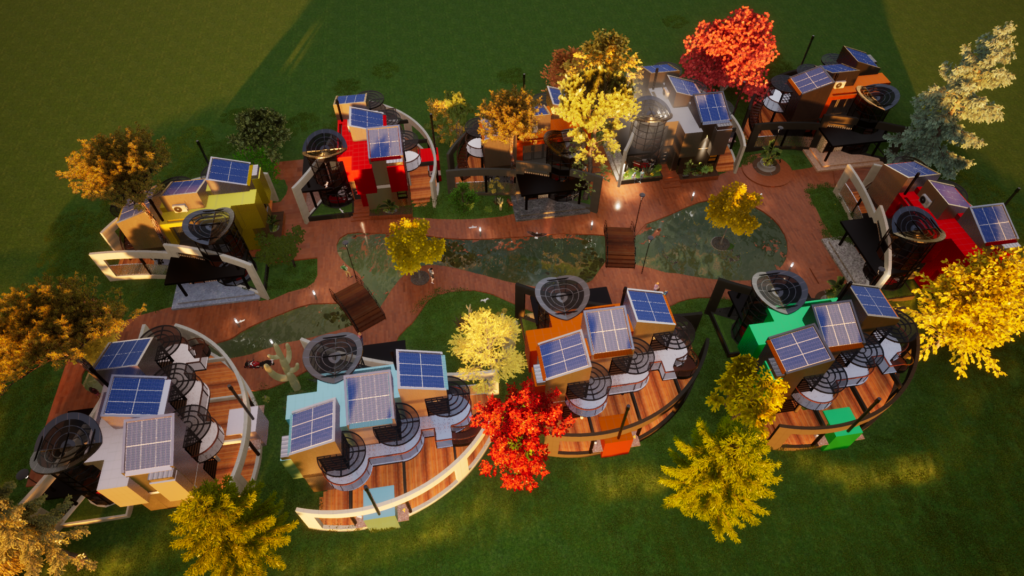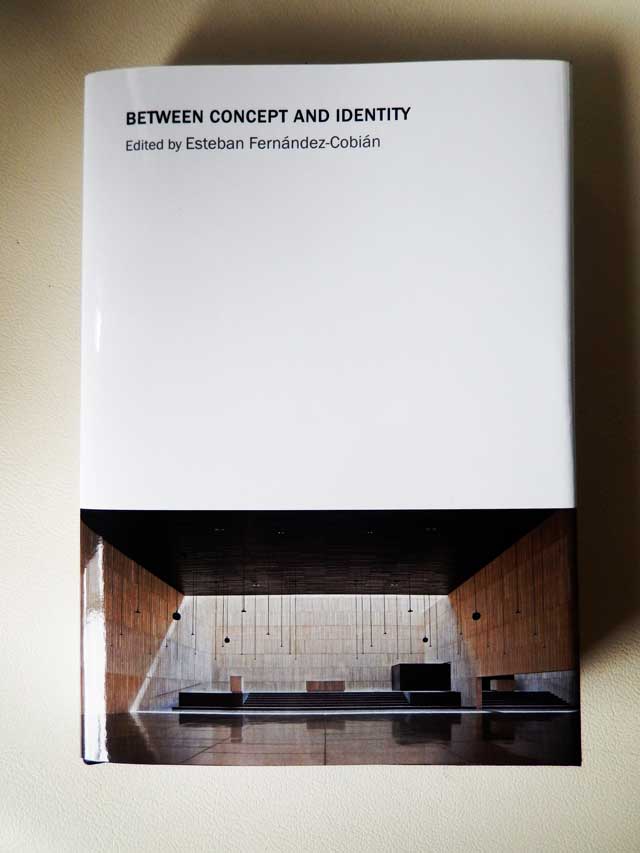Category: Uncategorized
Tiny House Lake Arrowhead in winter
Tiny House International Architecture Contest, 2020
This is a concept with 350 sf Livable area, plus terraces, decks and Pier. Kitchen with breakfast with Patio Cover with BBQ and dining area on first floor; on the second floor is the living room convertible in a Bedroom in double height, with a mezzanine where the small office with a library is located. on top of the building is located the main access and the bridge where the parking is, linked to the street. All the levels are connected by an elevator with its transparent steel and glass passageway that allows the inhabitants to view the terraces and the exterior landscape. Thus, the small house on 3 l3v3ls, allows double access by road on tof as well as by saling from the lake level.
Tiny House Architectural Contest
The new conditions of the third millennium have led us to rethink our way of life.
We have overwhelmed nature with overpopulation, which is causing positive reflection aimed at ending an era of destruction of our habitat, as we have known it.
We must think about reducing the space we have appropriated to minimize these effects by optimizing land use by alternating it over time.
Globalization and the different time zones of the planet could lead to a reorganization of working times around the world.
Working from home would eliminate the movement of large masses of vehicles at fixed times that cause large traffic jams during peak hours.
The areas that we must gradually modify are those in which we have abused the appropriation of natural soil, with constructions that have waterproofed the surface of the earth, such as roads, roofs, solar panels, etc. causing the modification of the natural water cycle, as well as air pollution.
To avoid this, the strategy must focus on the realization of new projects that minimize its total area and are surrounded by green spaces.
As for the single-family house, we have usually assigned a room for each use. Therefore, a bedroom is used a third of the day, (8 hours daily) Kitchen, one hour per meal (4 hours in 24) and so on with each of the uses.
In California, many young people share their housing needs by taking advantage of the fact that students and workers sleep at different times. This could well be optimized if a system of shared shifts, commonly called a “hot bed”, were planned. Similarly, it is not necessary for a house to have more than one bathroom that is used for no more than an hour a day.
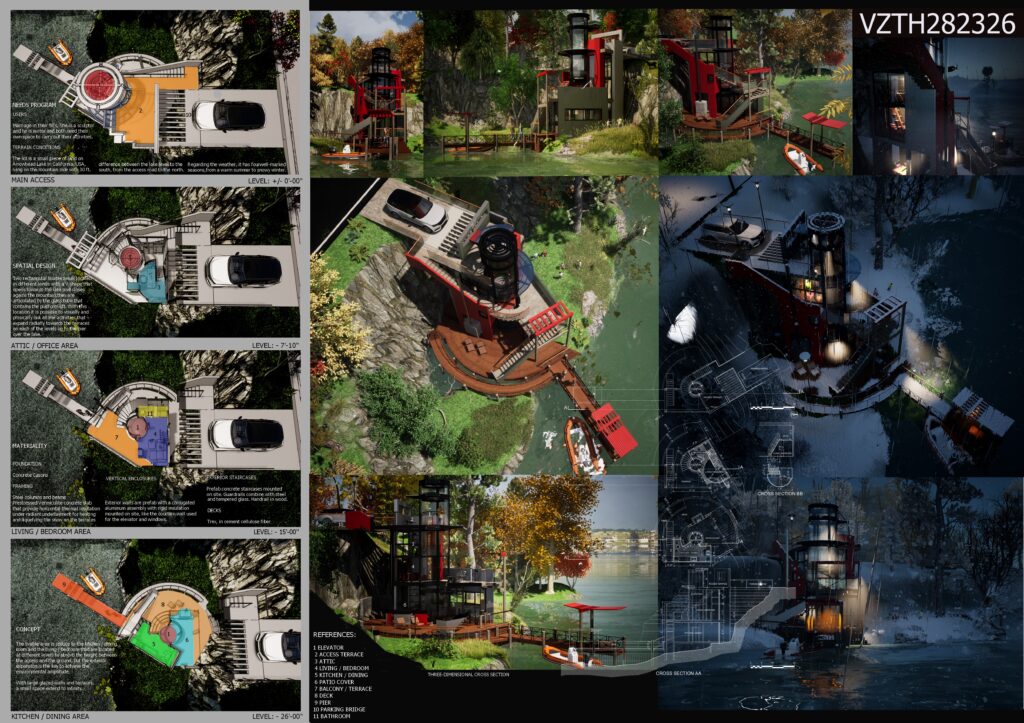
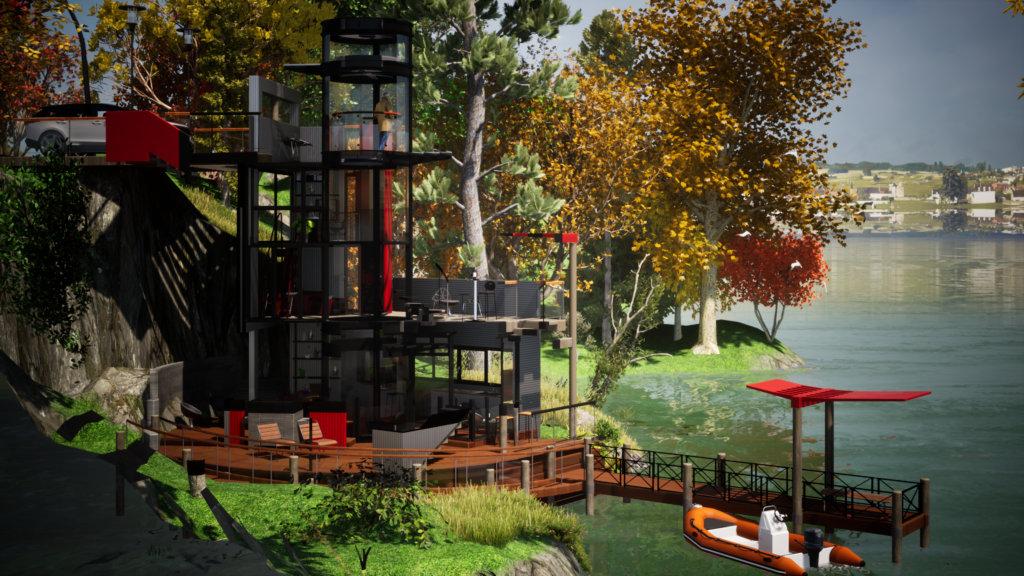
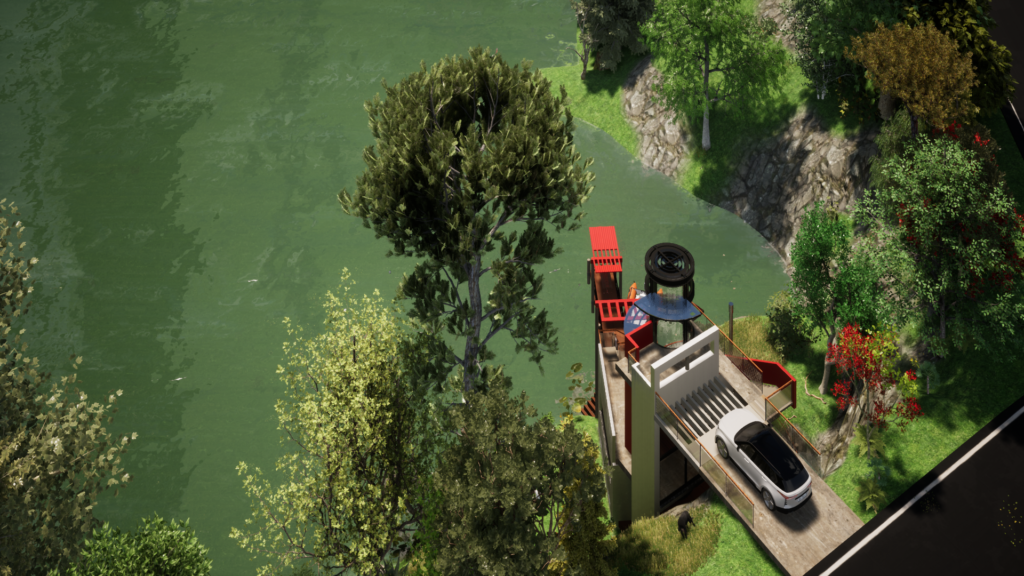
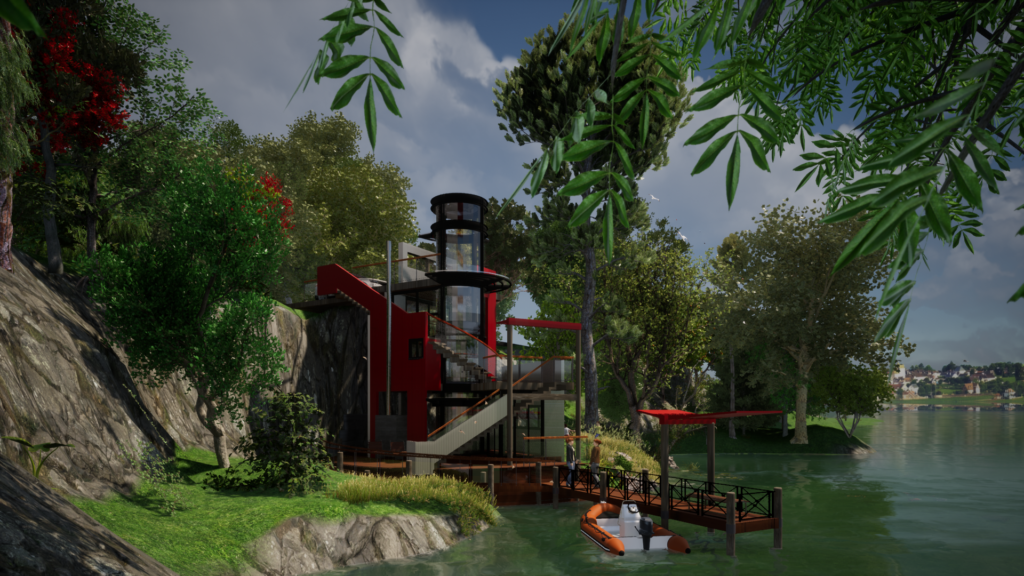
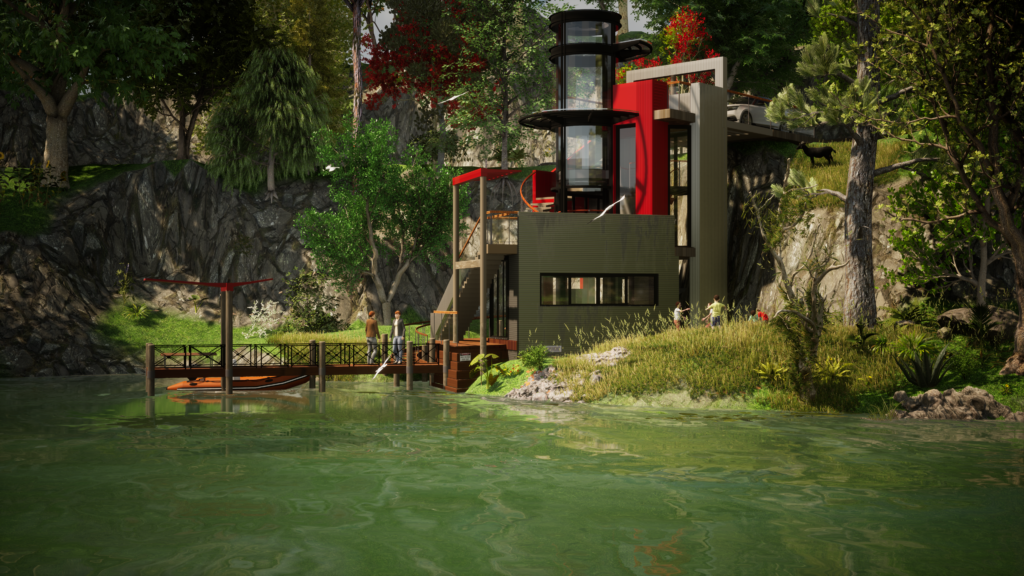
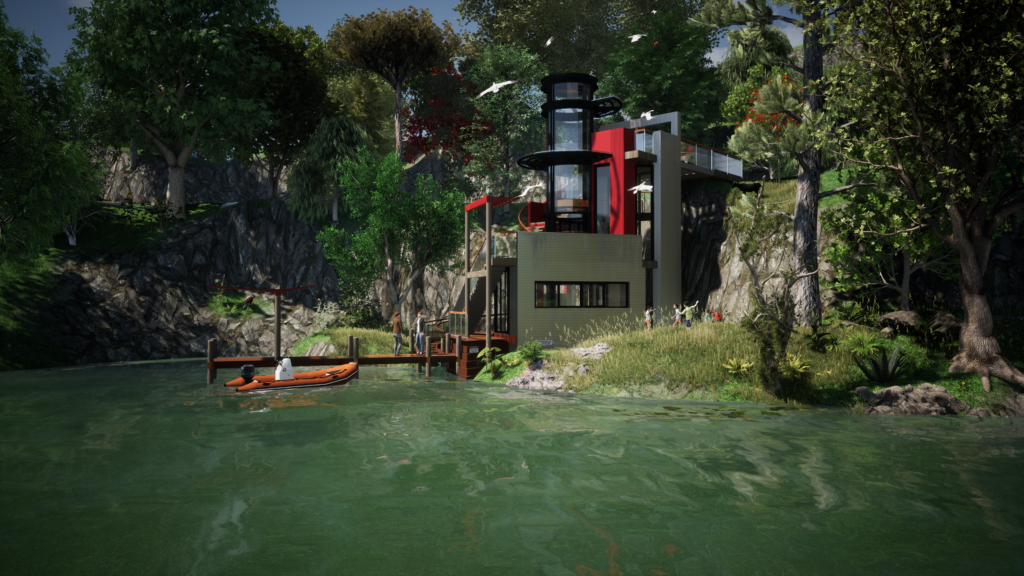
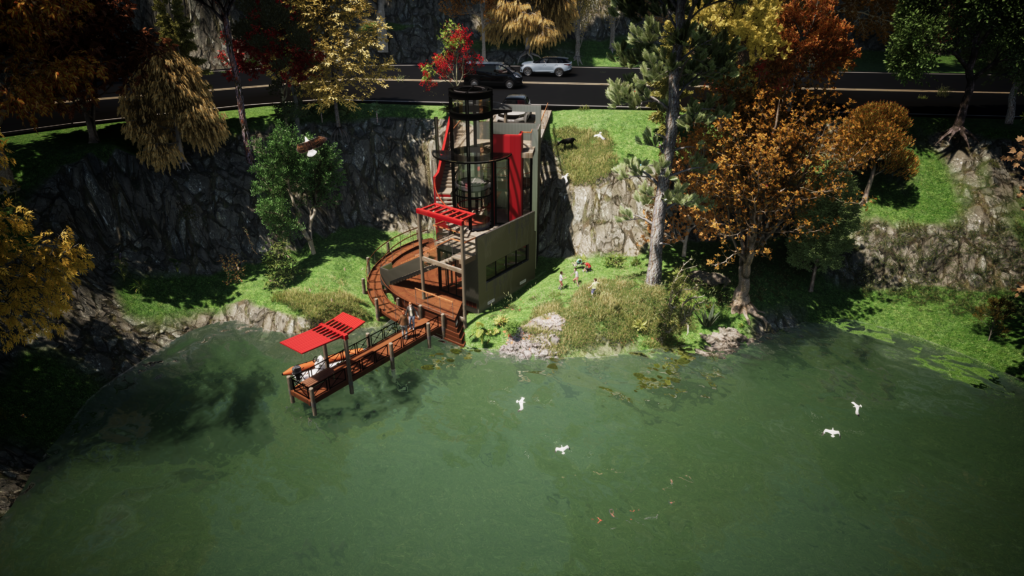
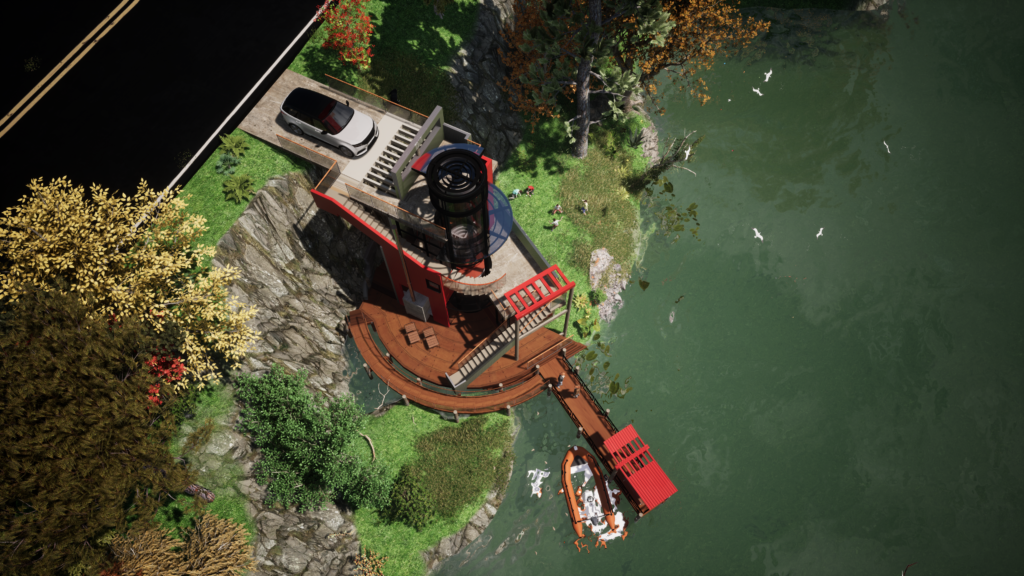
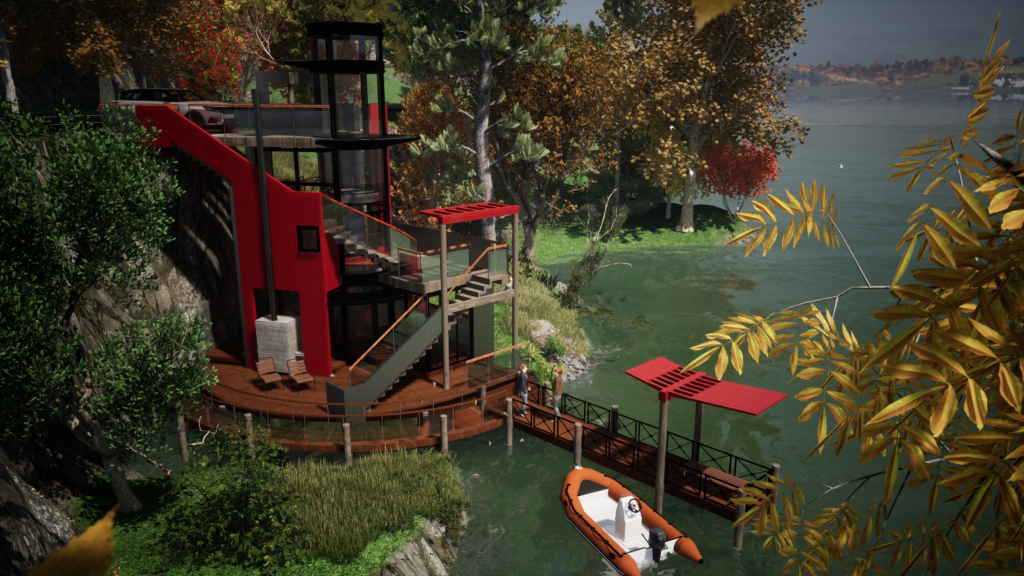
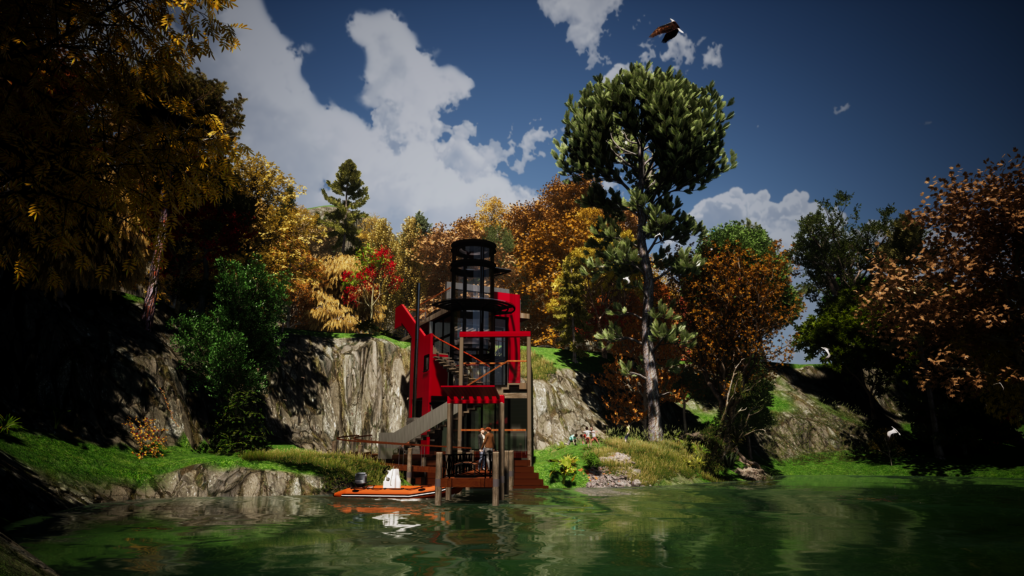
Aquatic Heliconia
Skycraper Architectural Contest 2011
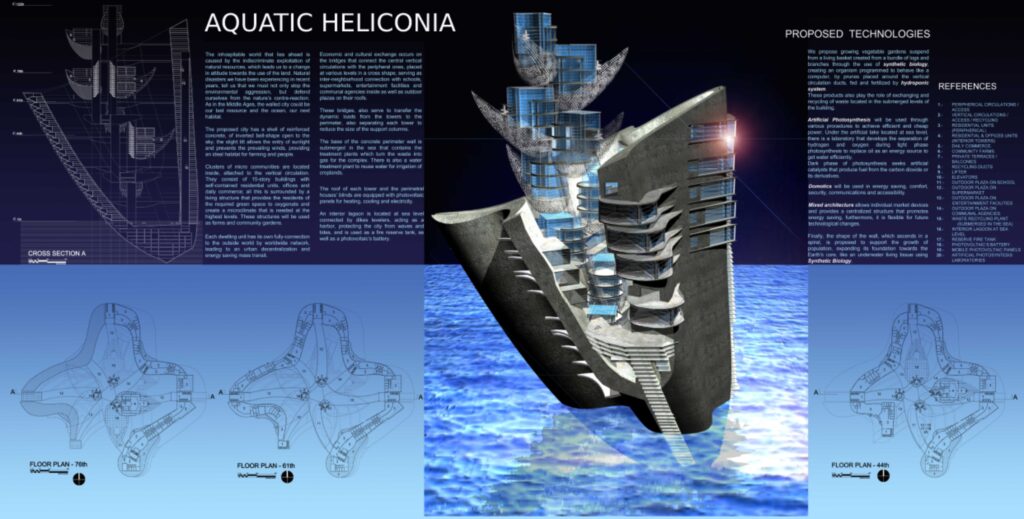
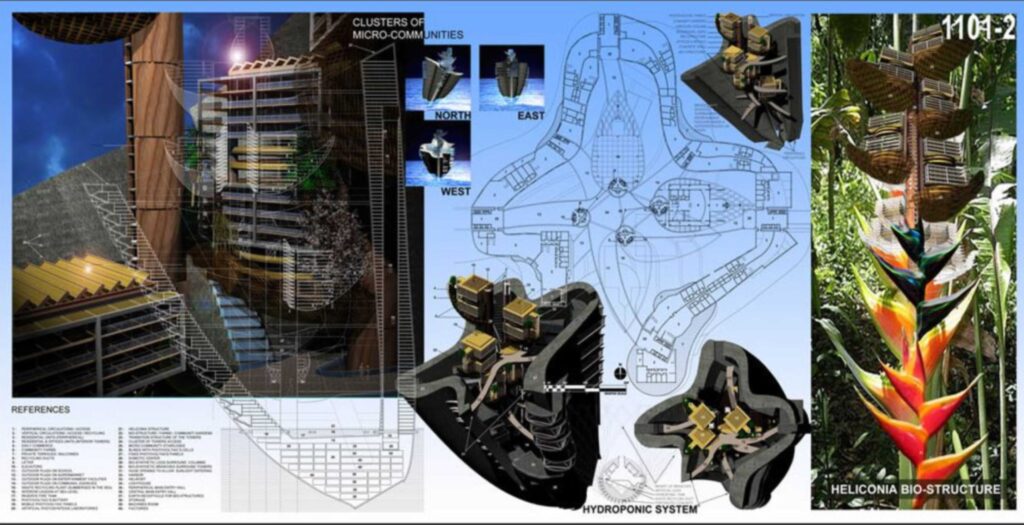

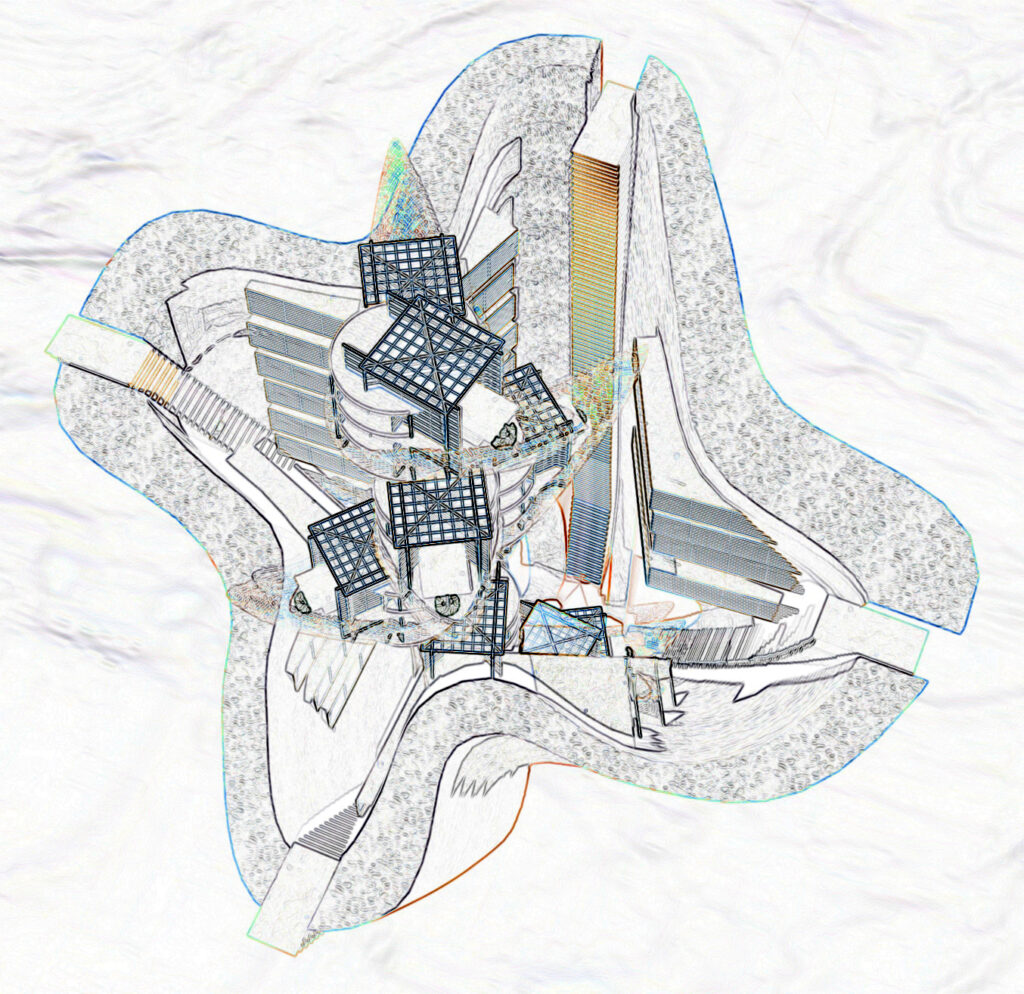
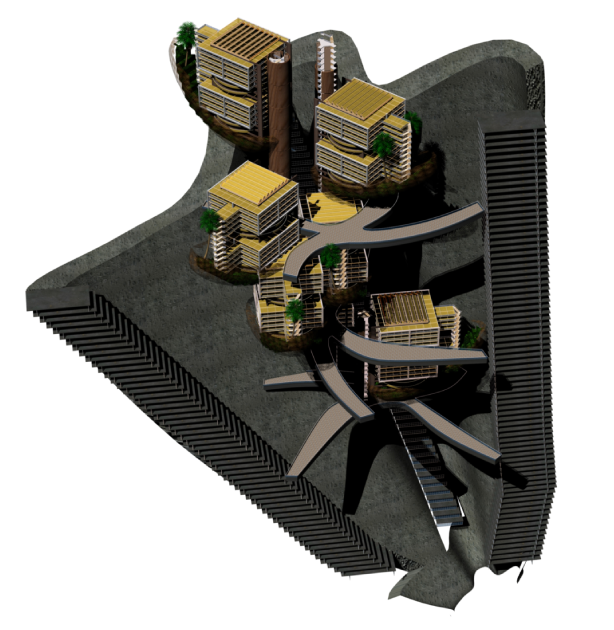
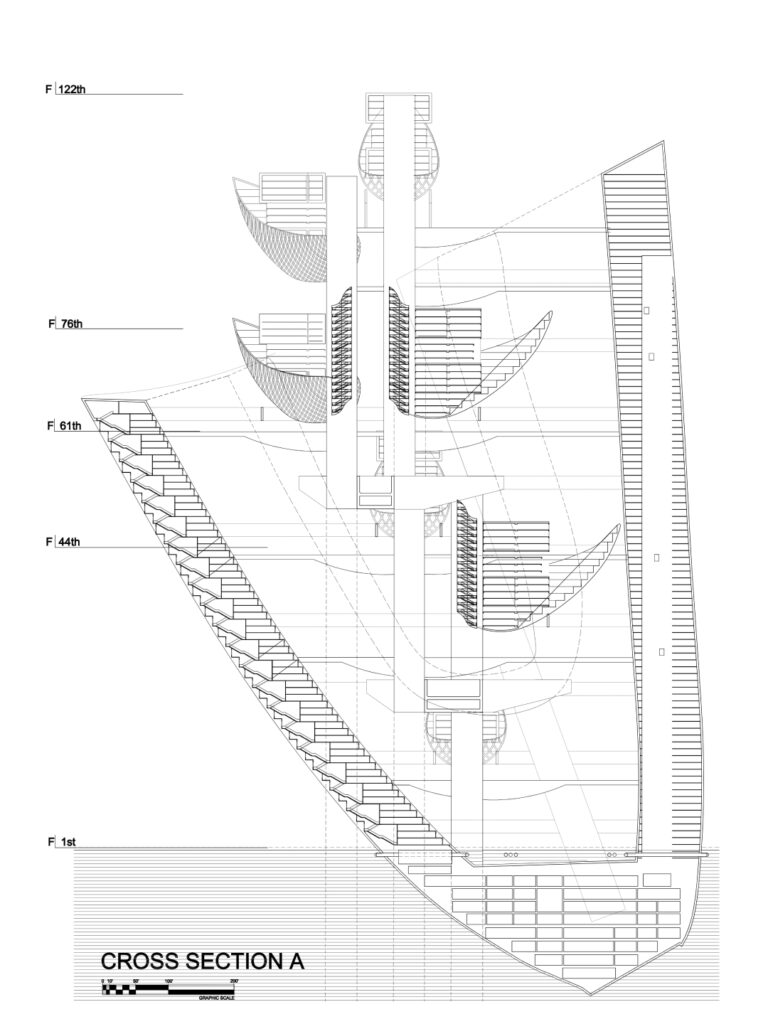
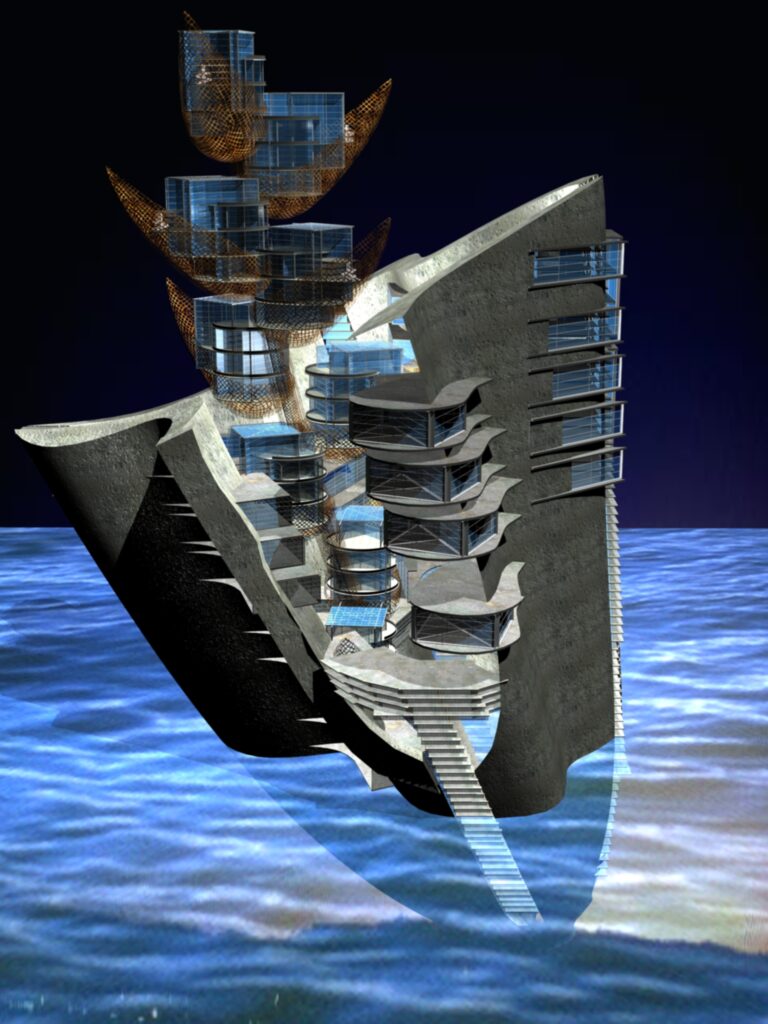
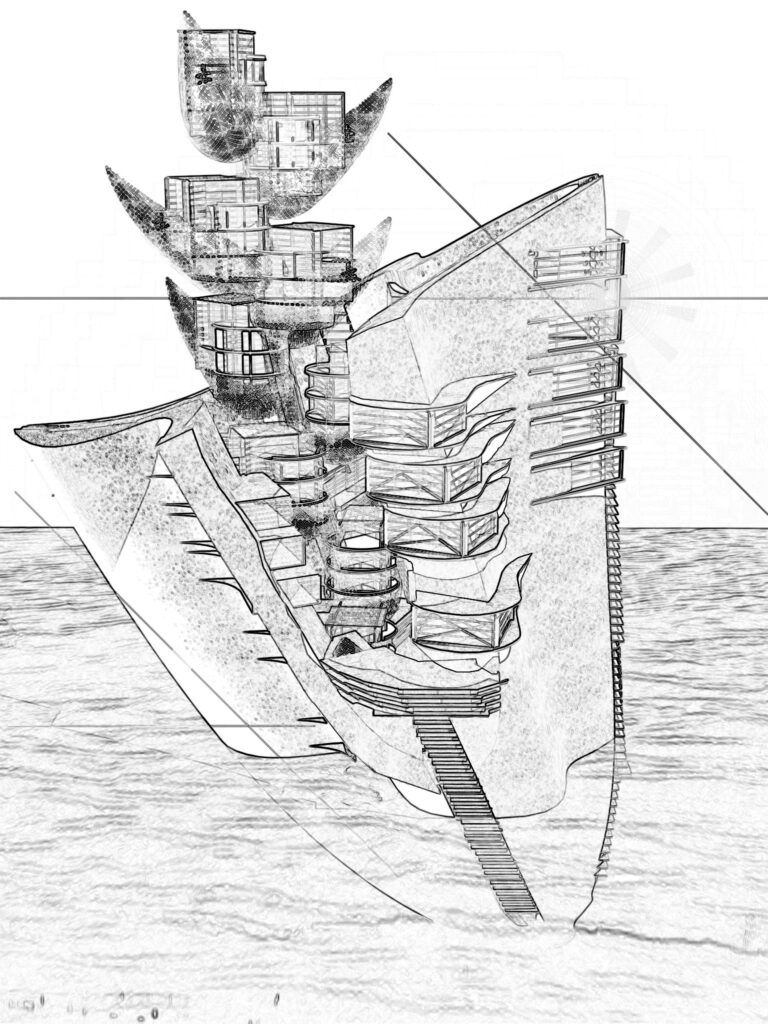
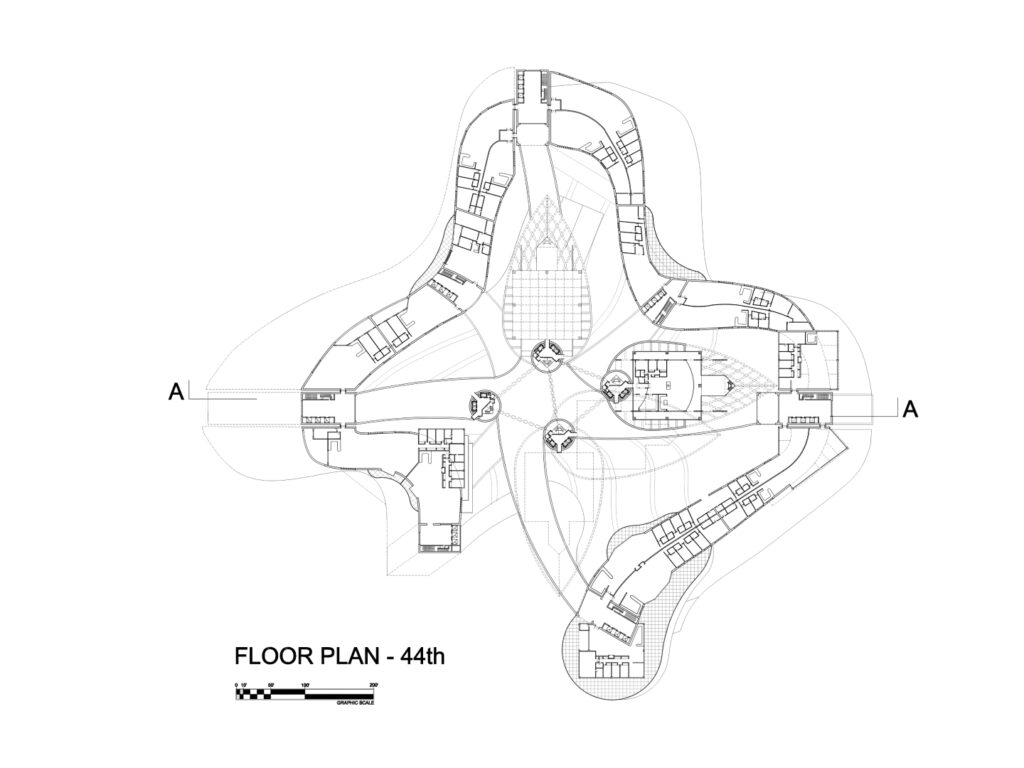
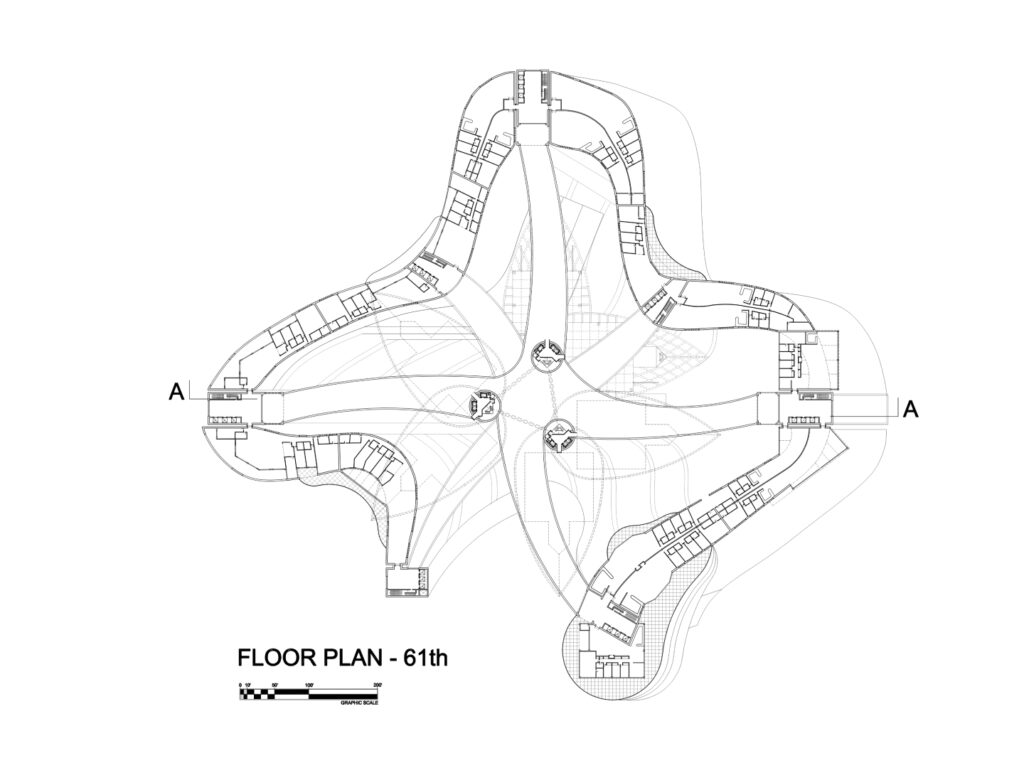

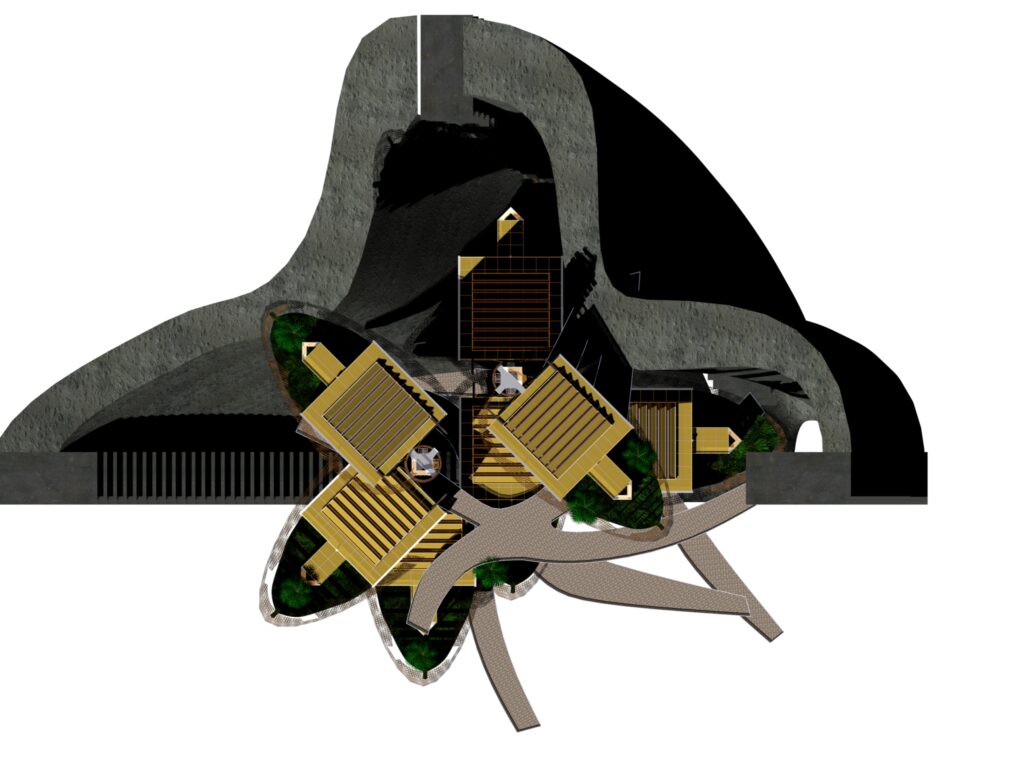
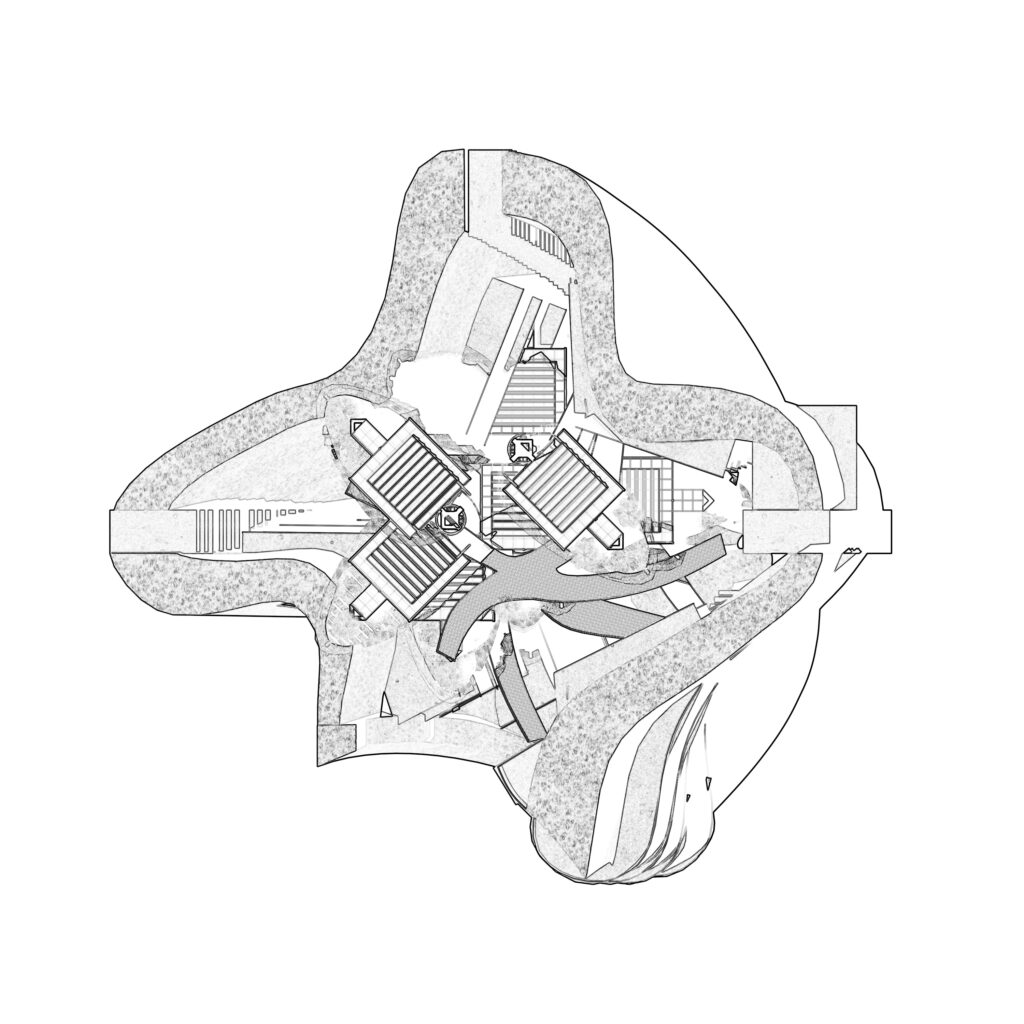

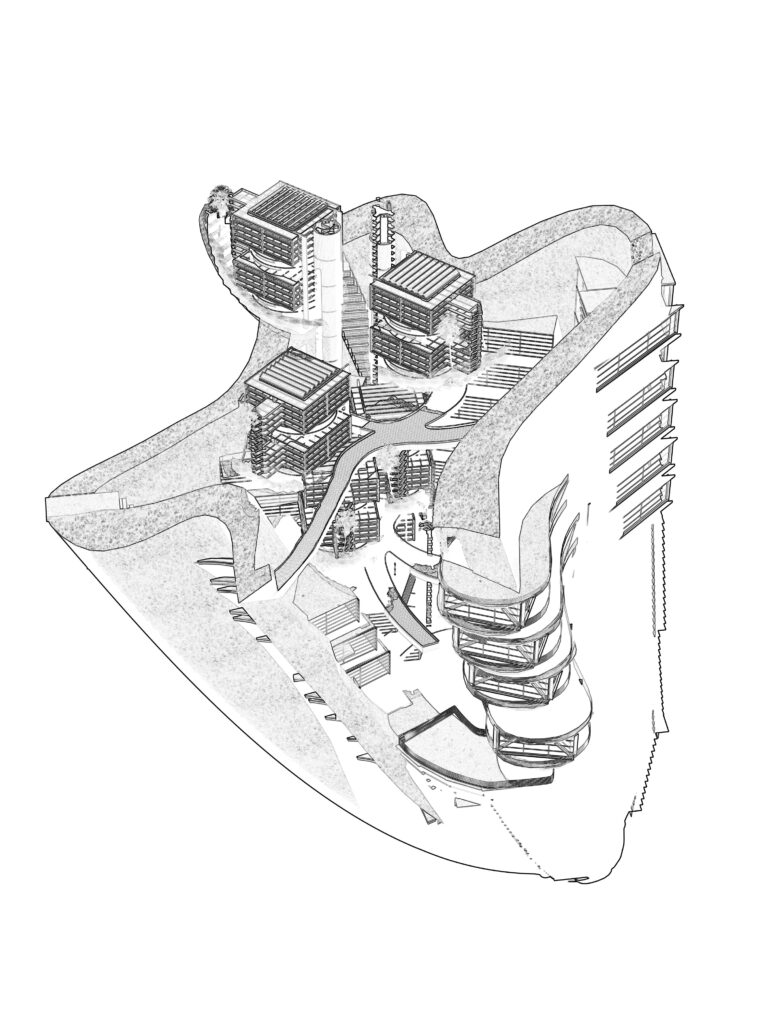
Aquatic Heliconia
The inhospitable world that lies ahead is caused by the indiscriminate exploitation of natural resources, which leads us to a change in attitude towards the use of the land. Natural disasters we have been experiencing in recent years, tell us that we must not only stop the environmental aggression, but defend ourselves from the nature’s contra-reaction. As in the Middle Ages, the walled city could be our last resource and the ocean, our next habitat.
The proposed city has a shell of reinforced concrete, of inverted bell-shape open to the sky; the slight tilt allows the entry of sunlight and prevents the prevailing winds, providing an ideal habitat for farming and people.
Clusters of micro communities are located inside, attached to the vertical circulation. They consist of 15-story buildings with self-contained residential units, offices and daily commerce; all this is surrounded by a living structure that provides the residents of the required green space to oxygenate and create a microclimate that is needed at the highest levels. These structures will be used as farms and community gardens.
Each dwelling unit has its own fully-connection to the outside world by worldwide network, leading to an urban decentralization and energy saving mass transit.
Economic and cultural exchange occurs on the bridges that connect the central vertical circulations with the peripheral ones, placed at various levels in a cross shape, serving as inter-neighborhood connection with schools, supermarkets, entertainment facilities and communal agencies inside as well as outdoor plazas on their roofs.
These bridges, also serve to transfer the dynamic loads from the towers to the perimeter, also separating each tower to reduce the size of the support columns.
The base of the concrete perimeter wall is submerged in the sea that contains the treatment plants which turn the waste into gas for the complex. There is also a water treatment plant to reuse water for irrigation of croplands.
The roof of each tower and the perimetral houses’ blinds are equipped with photovoltaic panels for heating, cooling and electricity.
An interior lagoon is located at sea level connected by dikes levelers, acting as a harbor, protecting the city from waves and tides, and is used as a fire reserve tank, as well as a photovoltaic’s battery.
PROPOSED technologies:
We propose growing vegetable gardens suspend from a living basket created from a bundle of logs and branches through the use of synthetic biology, creating an organism programmed to behave like a computer, by prunes placed around the vertical circulation ducts, fed and fertilized by hydroponic system.
These products also play the role of exchanging and recycling of waste located in the submerged levels of the building.
Artificial photosynthesis will be used through various procedures to achieve efficient and cheap power. Under the artificial lake located at sea level, there is a laboratory that develops the separation of hydrogen and oxygen during light phase photosynthesis to replace oil as an energy source to get water efficiently.
Dark phase of photosynthesis seeks artificial catalysts that produce fuel from the carbon dioxide or its derivatives.
Domotics will be used in energy saving, comfort, security, communications and accessibility.
Mixed architecture allows individual market devices and provides a centralized structure that promotes energy saving, furthermore, it is flexible for future technological changes.
Finally, the shape of the wall, which ascends in a spiral, is proposed to support the growth of population, expanding its foundation towards the Earth’s core, like an underwater living tissue using synthetic biology.
Lotus Flower
Innovation an Architecture for the Sea
Foundation Jacques Rougerie
2 Institute de France – 2020 Contest
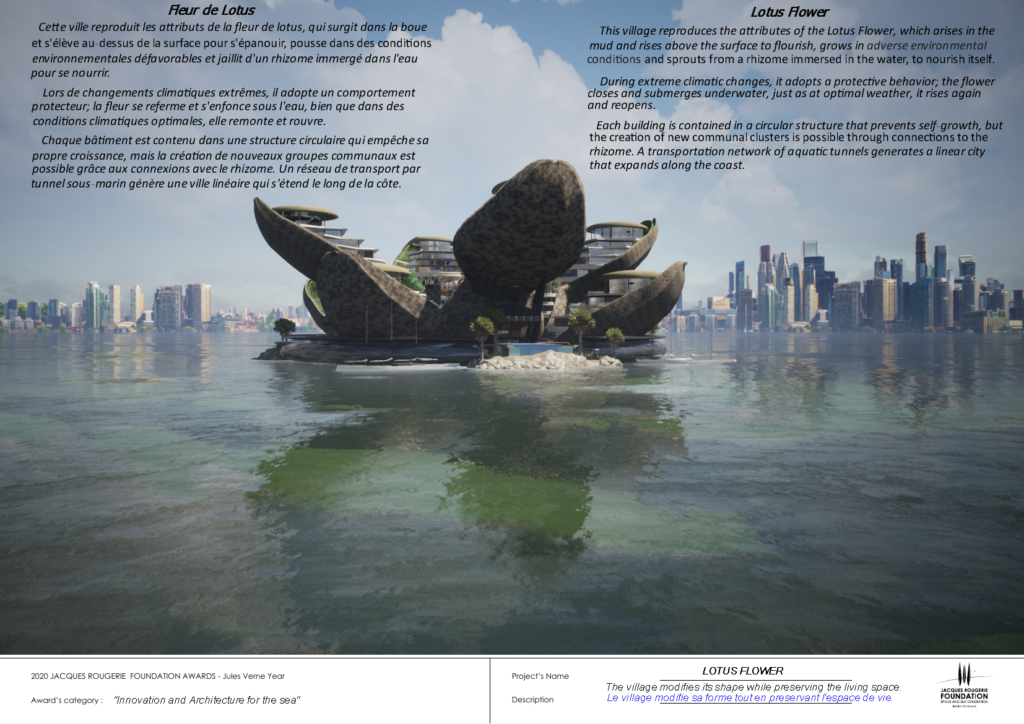
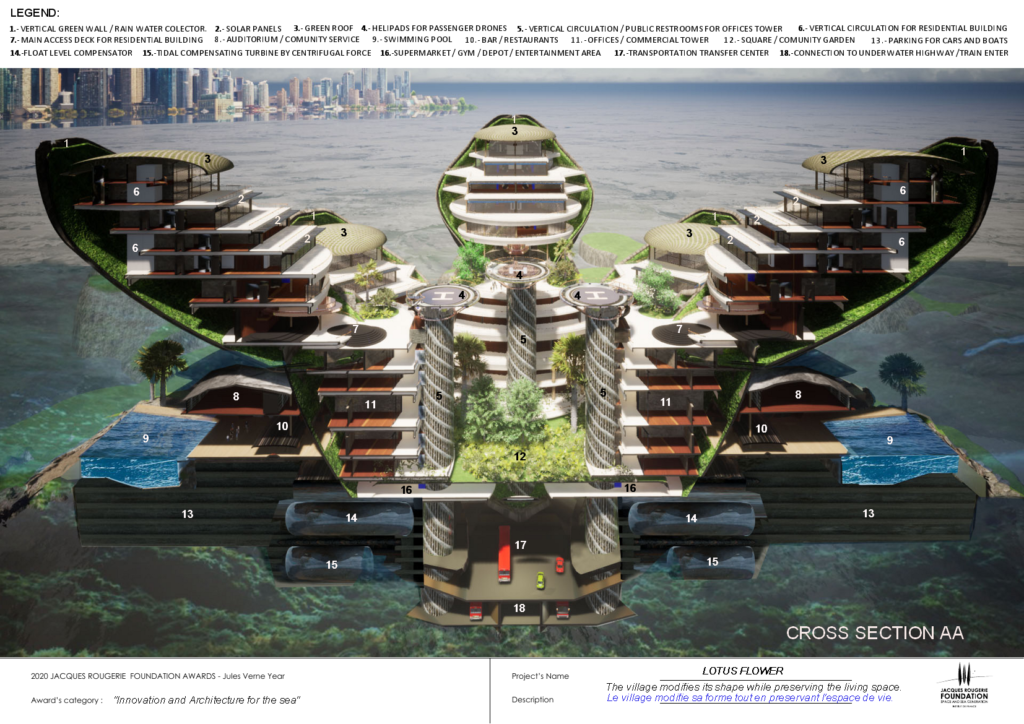
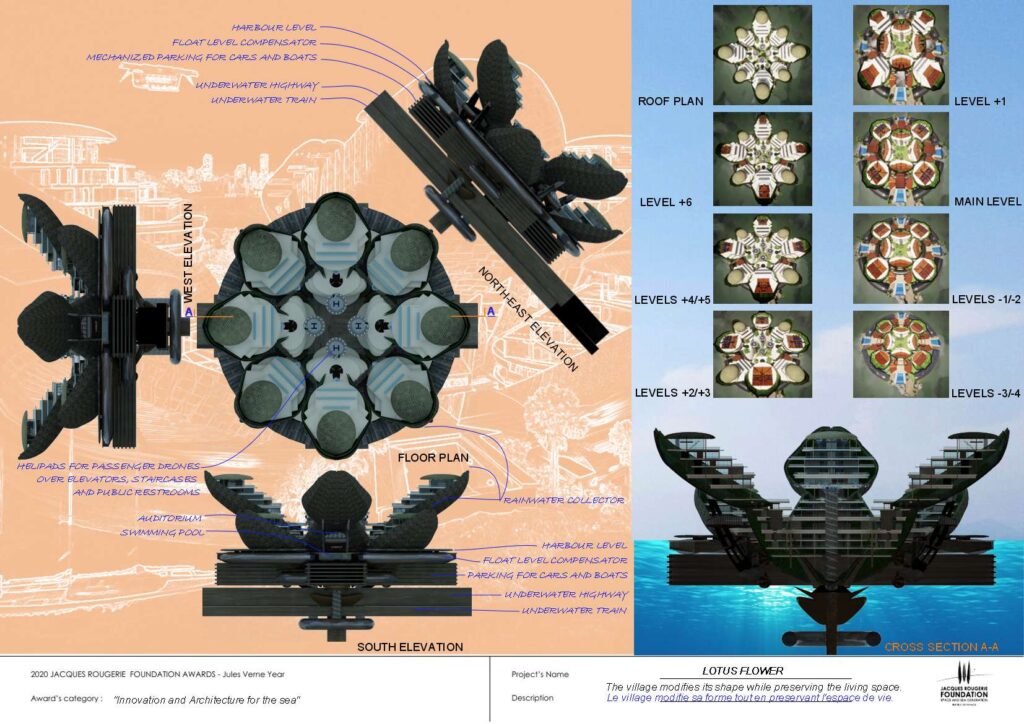
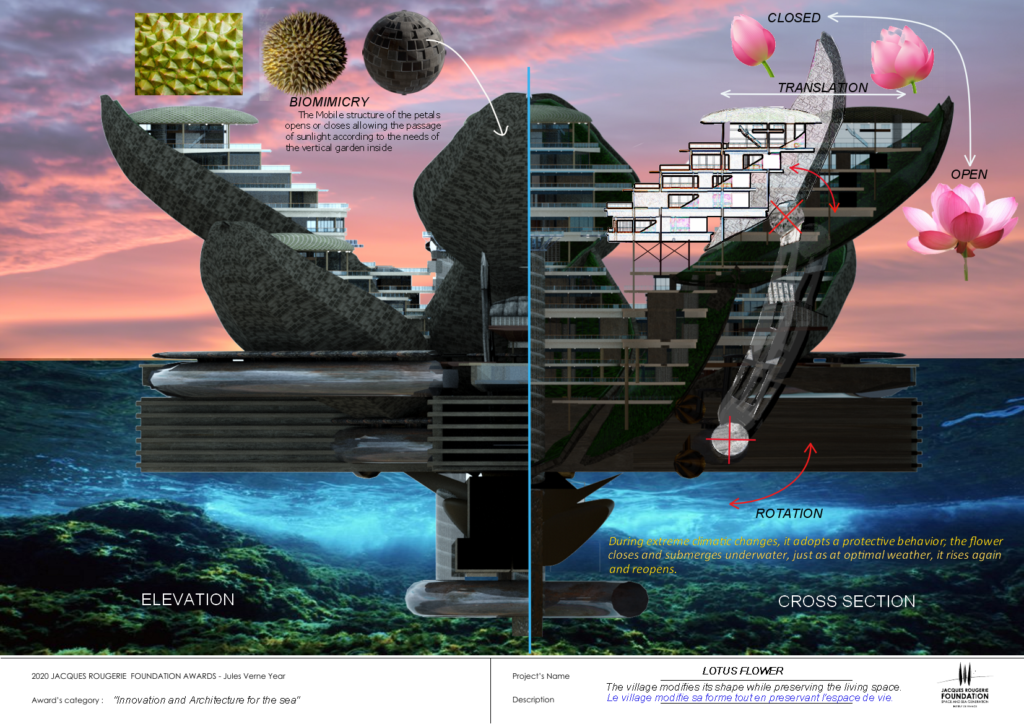
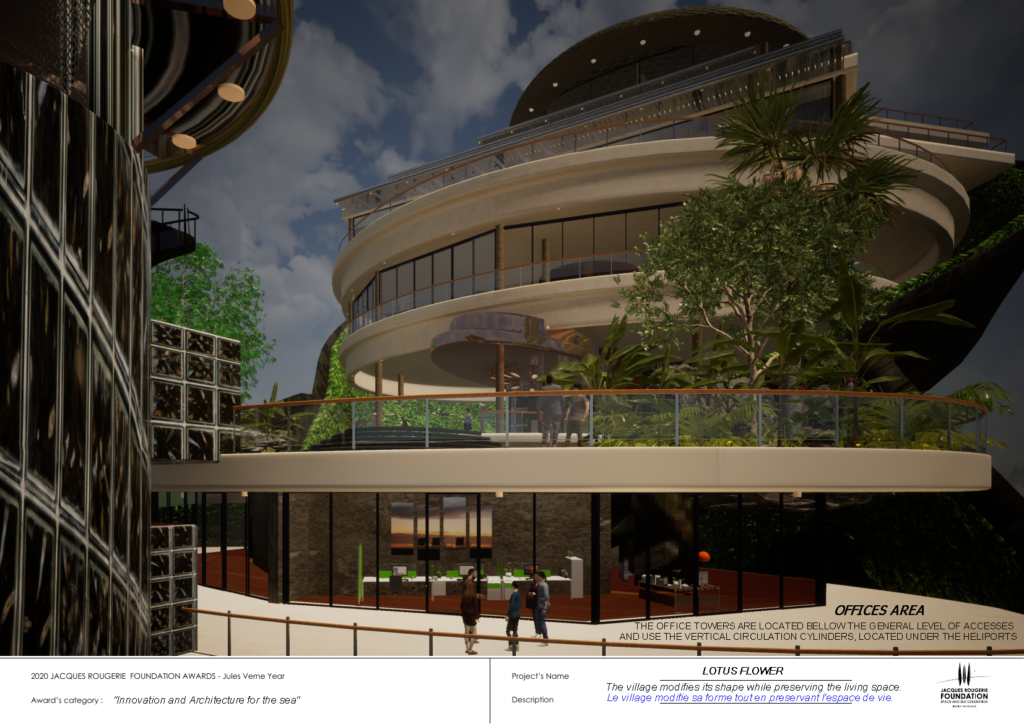
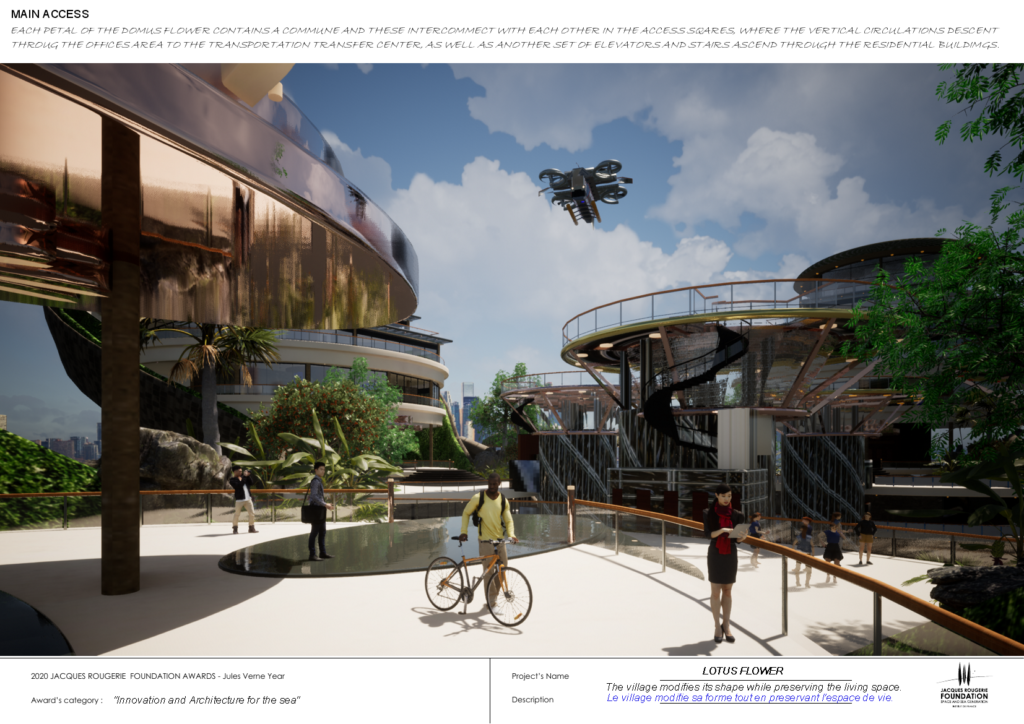
Between Concept And Identity
Between Concept And Identity
Religious Expressions of Chicanos in Los Angeles. From the body to the streets.
A paper by Arq. Myriam Mahiques
Edited by Esteban Fernández Cobián. Cambridge Scholars Publishing, UK. PP 163-169. 2014. ISBN (10) 1-44386520-6. ISBN (13):978-1-4433-65203
I’m happy to say that this paper of mine has been published in a compiled edition of the Symposium Between Concept and Identity, that was held in Spain in 2009:
” the Ourense Bishopric through the Santa María Nai Foundation and the Ourense Branch of Galician Official Association of Architects (COAG) have called a new edition to be held from November 12 through 14, 2009 in Ourense under the title: Contemporary Religious Architecture. Between Concept and Identity.”
This is my introduction:
I propose a sub-classification within representational spaces, full of complex symbolism and usually related to the underground side of life: there is a third space or Nepantla, applied to the culture of Mexican immigrants in the USA and their descendants, popularly called Chicanos. They create this new space from the feeling of being in the middle as a cultural link among Anglos, Mexicans and Indigenous people. Nepantla is considered to be a transitional stage that simply starts with language. One of the cultural settlement strategies is precisely the process of trans-culture acquisition and value transfer, which is summarised in a different culture reflecting the ambiguity of mixed race. Once the Nepantla tensions are understood and faced, the native Being/I is recovered and thus Nepantla becomes a psychological, spiritual and political space where Chicanos find the meaning of their culture by recovering the ancestral. Those religious spaces range from bodily artistic expressions to the materialisation of traditional little altars at home and it is expanded to the urban scale, to worshipping the dead and to Catholic rites in the street where both the harmoniously co-existing Catholic and pagan imaginaries give rise to massive gatherings. Therefore, we must analyse the religious expressions of Chicanos as an unavoidable part of their social reality in the city of Los Angeles portrayed at every possible scale. Due to their own restrictive colonial origins, they do not need a containing building but are merely supported by faith.
This is the link to buy the book
